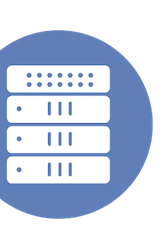Elisity has recently enhanced its offerings by integrating advanced functionality into its security platform. This update focuses on bolstering cybersecurity measures and streamlining user access controls. The new features are designed to provide organizations with improved agility and stronger defense mechanisms against evolving security threats. Read more in this LinkedIn Pulse article by Peter Welcher following Networking Field Day 36.
PathSolutions: A Fresh Take on Network Troubleshooting
Dakota Snow covers PathSolutions’ innovative approach to network troubleshooting, highlighting how their solutions offer a seamless way to diagnose and remedy network issues. His exploration emphasized the efficiency of PathSolutions’ tools in providing deep insights and real-time analytics to foresee and tackle potential disruptions before they impact network performance significantly. Read more coverage of Networking Field Day 36 on LinkedIn!
A Fresh Look at Networking with Meter
Dakota Snow explores the innovative capabilities of Meter, a company revolutionizing the networking space with smart, scalable solutions. In her review, Dakota highlighted how Meter simplifies networking through its fully managed infrastructure, which supports both physical and IoT devices seamlessly. Read more coverage of Networking Field Day 36 by Dakota Snow on LinkedIn!
Evolving Network Operations with Nokia’s Event-Driven Automation
Bruno Wollmann discusses the transformation in network operations through Nokia’s innovative event-driven automation, which enhances efficiency and agility. He highlights how this technology enables networks to self-adjust in real-time, responding to various events without manual intervention. Wollmann’s insights offer a crucial understanding of the evolving landscape in network technology, emphasizing the benefits of automation in operational responsiveness and reliability. Read more in this LinkedIn Pulse article following Networking Field Day Exclusive with Nokia.
Data Infrastructure Al Value Creation: Enhancing AI Outcomes
In this LinkedIn Pulse article, Brian Booden explores the critical interdependence between data infrastructure and AI value creation. He discusses how robust data management systems and strategies significantly enhance the efficacy of AI outcomes. Booden also provides insights on optimizing data environments to maximize AI-driven innovations and performance. Read more in this article, inspired by the Solidigm presentation at AI Data Infrastructure Field Day 1.
Nature Abhors a Vacuum
Maciej Lelusz emphasizes the critical importance of proactive engagement and leadership in effectively filling gaps and addressing unmet needs within organizations. He argues that nature’s tendency to abhor a vacuum applies equally to the corporate and technological environments, where inaction can lead to missed opportunities and weakened strategic positions. Lelusz encourages leaders to step forward, innovate, and drive change to ensure their teams and operations remain at the forefront of industry advancements and success. Read more in this LinkedIn Pulse article following the VMware presentation at Cloud Field Day 21.
Understanding Nokia’s Event Driven Automation (EDA)
Rita Younger provides an insightful overview of Nokia’s Event Driven Automation (EDA), emphasizing its critical role in enabling more efficient network management through real-time, automated reactions to network events. She explores how EDA supports the transformation of network operations by minimizing manual intervention and optimizing resource allocation, thereby enhancing performance and reliability. Her discussion underscores the potential of EDA to revolutionize the telecommunications industry by facilitating smarter, faster, and more adaptable network infrastructures. Read more in this LinkedIn Pulse article inspired by the recent Networking Field Day Exclusive event with Nokia.
What do you think of Qumulo’s Cloud Data Platform?
In a recent video hosted on LinkedIn, Jon Myer engaged delegates from Cloud Field Day 21, including Stephen Foskett, Maciej Lelusz, Ken Nalbone, and Jack Poller, to gather their insights and opinions on the Qumulo Cloud Data Platform. The discussion aimed to provide a comprehensive understanding of the platform’s capabilities and performance through expert perspectives. Watch Jon’s reaction videos on LinkedIn!
What do you think of VMware Cloud Foundation?
In this video, Jon Myer asks the Cloud Field Day 21 delegates for their opinion on VMware Cloud Foundation. Watch for more video coverage by Jon on LinkedIn!
The VCF Go-To-Market We Needed From Broadcom a Year Ago.
Ken Nalbone emphasizes the importance of Broadcom’s recent strategic initiatives concerning VMware Cloud Foundation (VCF). He believes earlier action could have better aligned Broadcom with market demands and technological trends, optimizing their positioning in the competitive landscape. Read more in this LinkedIn Pulse article inspired by the VMware by Broadcom presentation at Cloud Field Day 21.
What do you think of Platform9’s Private Cloud Director?
Jon Myer considers Platform9’s Private Cloud Director in his latest video, highlighting its potential to streamline cloud management for businesses. In conversation with fellow Cloud Field Day 21 delegates, Myer sees the impact of the platform, notably its ability to deliver a simplified and scalable cloud infrastructure. Watch this LinkedIn video for their thoughts!
Transformation pendulum
In this article, Maciej Lelusz discusses the complexities and challenges inherent in organizational change and transformation, focusing particularly on processes like digital transformation, cloud migration, and DevOps adoption. It portrays these changes not merely as strategies for advancing technology or business practices, but primarily as essential reactions to inherent messes within an organization. These changes, which often involve acknowledging and confronting deeply rooted issues, lead to both technological adjustments and significant shifts in personnel. Read more in this LinkedIn Pulse article, inspired by a delegate roundtable discussion at Cloud Field Day 21.
Platform9 Releases Private Cloud Director. Enables Virtual Machine Migration from VMware to OpenStack En-Masse.
Ken Nalbone reports on Platform9’s latest launch, the Private Cloud Director, which significantly enhances cloud infrastructure management by allowing seamless virtual machine migration from VMware environments to OpenStack. This new solution supports bulk operations, facilitating large-scale migrations efficiently and reducing the complexity typically associated with such processes. Private Cloud Director positions Platform9 as a key player in simplifying cloud transitions and expanding OpenStack adoption in diverse IT landscapes. Read more in this LinkedIn Pulse article inspired by the Platform9 presentation at Cloud Field Day 21.
The Evolving Landscape of AI Infrastructure: Powering the Future with Cisco
In this LinkedIn Pulse article, Jack Poller discusses the transformation of AI infrastructure, emphasizing Cisco’s pivotal role in addressing the escalating computational demands driven by the growing adoption of AI technologies. Through an exploration of Cisco’s latest innovations, Poller highlights how Cisco is equipping businesses to effectively manage and harness the enormous data generated by AI applications, fundamentally enhancing operational efficiency and innovation. The discussion underscores the importance of robust infrastructure in unlocking AI’s potential, positioning Cisco’s solutions at the forefront of this technological evolution. This article follows Cisco’s presentation at AI Field Day 5.
Security Field Day 12 Delegate Roundtable Recap
Girard Kavelines recently participated in the Security Field Day 12, engaging in comprehensive discussions focused on the latest trends and challenges in cybersecurity. This event provided an insightful platform for industry leaders and innovators to share their expertise, strategies, and solutions for addressing complex security issues facing enterprises today. Two delegate roundtables offered an invaluable exchange of ideas, emphasizing the importance of advancing security measures and collaboration within the tech community. Read more in this LinkedIn Pulse article, describing the two roundtable discussions.
The Rise of AI Networking: How Arista is Evolving Data Center Infrastructure
In this LinkedIn Pulse article, Jack Poller discusses AI networking. He focuses on Arista’s evolving role in data center infrastructure, discussing how their cutting-edge technologies are setting new industry standards. Poller highlights Arista’s integration of AI into their networking solutions, enhancing automation, analytics, and performance, fundamentally transforming data center operations. This evolution is poised to meet the growing demands for more efficient and robust data handling capabilities in increasingly AI-driven environments. This article was written following Arista’s presentation at AI Field Day 5.
More than web server certificates, digital identity
Alastair Cooke discusses the broader implications and applications of digital identity beyond merely securing web server communications with certificates. He highlights how digital identity serves as a foundational element in enhancing security across various networking domains, from user authentication to device validation. Cooke’s discussion underscores the vital role that comprehensive digital identity strategies play in safeguarding modern digital environments. Read more in this LinkedIn Pulse article inspired by the DigiCert presentation at Security Field Day 12.
Demystifying Elastic: From Keyword Search to AI-Powered Insights
In this LinkedIn Pulse article, Jack Poller provides a comprehensive overview of how Elastic has evolved from a straightforward keyword search tool to a sophisticated platform leveraging AI for advanced data insights. He delves into the key features and functionalities that enable Elastic to handle complex data analytical tasks efficiently. This article is an essential read for IT professionals aiming to enhance their data management and analysis strategies using Elastic’s cutting-edge technologies. Read more in this article, inspired by the Elastic presentation at AI Field Day 5.
HPE Presents at AI Data Infrastructure Field Day 1
Vuong Pham discusses the insights from the HPE presentation at AI Data Infrastructure Field Day 1. During this presentation, HPE discussed key challenges in the field and showcased their strategies for addressing these through innovative technology and systems integration. Read this LinkedIn Pulse article for more about HPE and AI Data Infrastructure Field Day!







